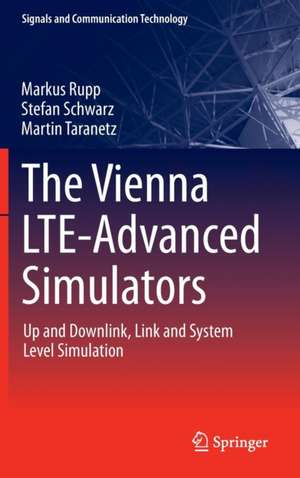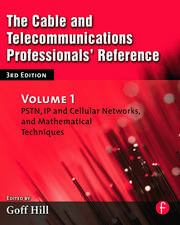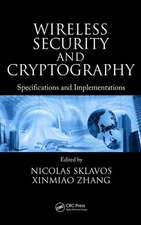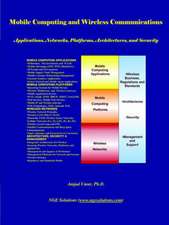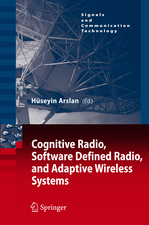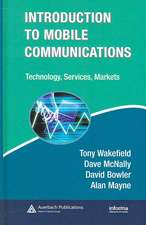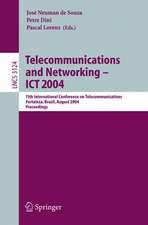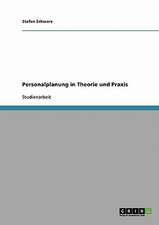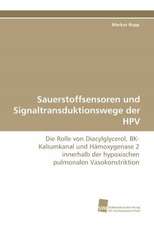The Vienna LTE-Advanced Simulators: Up and Downlink, Link and System Level Simulation: Signals and Communication Technology
Autor Markus Rupp, Stefan Schwarz, Martin Taranetzen Limba Engleză Hardback – 7 apr 2016
Part One addresses LTEand LTE-A link level techniques. As there has been high demand for the downlink(DL) simulator, it constitutes the central focus of the majority of thechapters. This part of the book reports on relevant highlights, includingsingle-user (SU), multi-user (MU) and single-input-single-output (SISO) as wellas multiple-input-multiple-output (MIMO) transmissions. Furthermore, itsummarizes the optimal pilot pattern for high-speed communications as well asdifferent synchronization issues. One chapter is devoted to experiments thatshow how the link level simulator can provide input to a testbed. This sectionalso uses measurements to present and validate fundamental results onorthogonal frequency division multiplexing (OFDM) transmissions that are notlimited to LTE-A. One chapter exclusively deals with the newest tool, theuplink (UL) link level simulator, and presents cutting-edge results.
In turn, Part Twofocuses on system-level simulations. From early on, system-level simulations havebeen in high demand, as people are naturally seeking answers when scenarioswith numerous base stations and hundreds of users are investigated. This partnot only explains how mathematical abstraction can be employed to speed upsimulations by several hundred times without sacrificing precision, but alsoillustrates new theories on how to abstract large urban heterogeneous networkswith indoor small cells. It also reports on advanced applications such as trainand car transmissions to demonstrate the tools’ capabilities.
| Toate formatele și edițiile | Preț | Express |
|---|---|---|
| Paperback (1) | 645.14 lei 6-8 săpt. | |
| Springer Nature Singapore – 25 apr 2018 | 645.14 lei 6-8 săpt. | |
| Hardback (1) | 651.34 lei 6-8 săpt. | |
| Springer Nature Singapore – 7 apr 2016 | 651.34 lei 6-8 săpt. |
Din seria Signals and Communication Technology
- 18%
 Preț: 952.89 lei
Preț: 952.89 lei - 18%
 Preț: 1559.80 lei
Preț: 1559.80 lei - 17%
 Preț: 361.80 lei
Preț: 361.80 lei - 18%
 Preț: 811.61 lei
Preț: 811.61 lei - 15%
 Preț: 585.26 lei
Preț: 585.26 lei - 18%
 Preț: 727.97 lei
Preț: 727.97 lei - 15%
 Preț: 585.90 lei
Preț: 585.90 lei -
 Preț: 393.35 lei
Preț: 393.35 lei - 20%
 Preț: 1002.73 lei
Preț: 1002.73 lei - 15%
 Preț: 641.71 lei
Preț: 641.71 lei - 20%
 Preț: 338.92 lei
Preț: 338.92 lei - 18%
 Preț: 1579.66 lei
Preț: 1579.66 lei - 18%
 Preț: 896.08 lei
Preț: 896.08 lei - 18%
 Preț: 847.11 lei
Preț: 847.11 lei - 18%
 Preț: 1234.77 lei
Preț: 1234.77 lei - 18%
 Preț: 905.54 lei
Preț: 905.54 lei - 15%
 Preț: 646.43 lei
Preț: 646.43 lei - 20%
 Preț: 662.48 lei
Preț: 662.48 lei - 15%
 Preț: 641.20 lei
Preț: 641.20 lei - 18%
 Preț: 1847.84 lei
Preț: 1847.84 lei - 18%
 Preț: 946.24 lei
Preț: 946.24 lei - 18%
 Preț: 1241.10 lei
Preț: 1241.10 lei - 20%
 Preț: 649.43 lei
Preț: 649.43 lei - 20%
 Preț: 993.28 lei
Preț: 993.28 lei - 18%
 Preț: 940.57 lei
Preț: 940.57 lei - 18%
 Preț: 1389.30 lei
Preț: 1389.30 lei - 20%
 Preț: 1003.50 lei
Preț: 1003.50 lei - 18%
 Preț: 953.52 lei
Preț: 953.52 lei - 20%
 Preț: 1001.16 lei
Preț: 1001.16 lei - 18%
 Preț: 1415.36 lei
Preț: 1415.36 lei - 15%
 Preț: 653.33 lei
Preț: 653.33 lei - 15%
 Preț: 645.60 lei
Preț: 645.60 lei - 15%
 Preț: 637.28 lei
Preț: 637.28 lei - 18%
 Preț: 948.79 lei
Preț: 948.79 lei - 18%
 Preț: 945.62 lei
Preț: 945.62 lei - 18%
 Preț: 836.36 lei
Preț: 836.36 lei - 18%
 Preț: 1225.46 lei
Preț: 1225.46 lei - 15%
 Preț: 635.01 lei
Preț: 635.01 lei - 15%
 Preț: 639.25 lei
Preț: 639.25 lei - 15%
 Preț: 646.30 lei
Preț: 646.30 lei - 15%
 Preț: 639.25 lei
Preț: 639.25 lei - 15%
 Preț: 712.36 lei
Preț: 712.36 lei - 20%
 Preț: 1006.12 lei
Preț: 1006.12 lei - 18%
 Preț: 970.56 lei
Preț: 970.56 lei
Preț: 651.34 lei
Preț vechi: 766.28 lei
-15% Nou
Puncte Express: 977
Preț estimativ în valută:
124.67€ • 135.47$ • 104.79£
124.67€ • 135.47$ • 104.79£
Carte tipărită la comandă
Livrare economică 21 aprilie-05 mai
Preluare comenzi: 021 569.72.76
Specificații
ISBN-13: 9789811006166
ISBN-10: 9811006164
Pagini: 357
Ilustrații: XXXIV, 357 p. 139 illus.
Dimensiuni: 155 x 235 x 22 mm
Greutate: 0.72 kg
Ediția:1st ed. 2016
Editura: Springer Nature Singapore
Colecția Springer
Seria Signals and Communication Technology
Locul publicării:Singapore, Singapore
ISBN-10: 9811006164
Pagini: 357
Ilustrații: XXXIV, 357 p. 139 illus.
Dimensiuni: 155 x 235 x 22 mm
Greutate: 0.72 kg
Ediția:1st ed. 2016
Editura: Springer Nature Singapore
Colecția Springer
Seria Signals and Communication Technology
Locul publicării:Singapore, Singapore
Cuprins
Introduction.- LinkLevel Simulation Basics.- Downlink Synchronization.- Symbol Detection in HighSpeed Channels.- Optimal Pilot Pattern for Downlink Transmissions.- Single UserMIMO LTE Transmission with Quantized Feedback.- Multi User and Multi CellSimulations.- Advanced Multi User MIMO Concepts.- LTE-Advanced UplinkTransmissions.- LTE-Advanced Uplink Transmissions.- Basic System LevelSimulations and Advanced Features.- Modeling Regular Aggregate Interference bySymmetric Structures.- Modeling Asymmetric Aggregate Interference by SymmetricStructures.- Analysis of Urban Two-Tier Heterogeneous Cellular Networks.- Simulationof Two-Tier Heterogeneous Cellular Networks.- Advanced System LevelApplications.
Notă biografică
Markus Rupp was bornin 1963 in Völklingen, Germany. He received his Dipl.-Ing. Degree in 1988 atthe University of Saarbrücken, Germany, and his Dr.-Ing. degree in 1993 at theTechnische Universität Darmstadt, Germany, where he worked with EberhardtHänsler on designing new algorithms for acoustic and electrical echocompensation. From November 1993 until July 1995, he held a postdoctoralposition at the University of Santa Barbara, California, with Sanjit Mitrawhere he worked with Ali H. Sayed on a robustness description of adaptivefilters with impact on neural networks and active noise control. From October1995 until August 2001, he was a member of Technical Staff at the WirelessTechnology Research Department of Bell-Labs in Crawford Hill, NJ, where heworked on various topics related to adaptive equalization and rapidimplementation for IS-136, 802.11 and UMTS. In October 2001 he was appointed aFull Professor of Digital Signal Processing in Mobile Communications at theTechnische Universität (TU) Wien, where he served as the Dean from 2005 to 2007and from 2016 to 2017. He was associate editor of IEEE Transactions on SignalProcessing from 2002 to 2005 and is currently associate editor of JASP EURASIPJournal on Advances in Signal Processing, and JES EURASIP Journal on EmbeddedSystems. He is a Fellow of the IEEE and was elected AdCom Member of EURASIPfrom 2004 to 2012, serving as President of EURASIP from 2009 to 2010. He hasauthored and co-authored more than 500 scientific papers, including 15 patentson adaptive filtering and wireless communications.
Stefan Schwarz wasborn in Neunkirchen, Austria, in 1984. He received his B.Sc. degree inelectrical engineering and his Dipl.-Ing. degree (M.Sc. equivalent) intelecommunications engineering with the highest distinctions in 2007 and 2009,respectively, both at TU Wien. He also received his Dr. techn. degree (Ph.D.equivalent) in telecommunications engineering with the highestdistinctions in 2013 at TU Wien. In 2010 he received the honorary prize of theAustrian Federal Ministry of Science and Research for outstanding graduates ofscientific and artistic universities. In 2014 he received the INiTS Award inthe category Information and Communication Technologies for innovativescientific works with potential economic applications. From 2008 to 2014 heworked as a project assistant in Prof. Markus Rupp’s Mobile Communicationsgroup at TU Wien’s Institute of Telecommunications, where he chiefly focused onlink and system level simulation of Long-Term Evolution (LTE)/ Long-TermEvolution-Advanced (LTE-A) networks and was one of the lead developers of theVienna LTE Simulators. In 2012 he visited the University of Texas at Austin as aresearch scholar and collaborated with Prof. Robert W. Heath, Jr. on limitedfeedback algorithms for distributed antenna systems. Since 2015 he has beenemployed as postdoctoral researcher (university assistant) at the Institute ofTelecommunications, leading a contract research project on Low Latency GroupCommunication over Long-Term Evolution Multimedia Broadcast Multicast Services(LTE MBMS). His research interests lie in the broad fields of wirelesscommunications and signal processing.
Martin Taranetz wasborn in 1986 in Amstetten, Austria. He received his B.Sc. degree in electricalengineering and his Dipl.-Ing degree (M.Sc. equivalent) in telecommunicationsengineering with the highest distinctions from the TU Wien, Vienna, Austria, in2008 and 2011, respectively. He also received his Dr. techn. degree (Ph.D.equivalent) in telecommunications engineering with the highest honors from theTU Wien in 2015. In his dissertation, he focused on the system level modelingand evaluation of heterogeneous cellular networks. Since 2015, he has beenemployed as a project assistant in the Mobile Communications group at TU Wien’sInstitute of Telecommunications. From January 2014 to April 2014 he was avisiting researcher with the Wireless Networking and Communications Group at theUniversity of Texas at Austin. His research interests lie in the broad fieldsof wireless communications and signal processing. He is a reviewer for IEEETransactions on Wireless Communications and IEEE Transactions on SignalProcessing.
Stefan Schwarz wasborn in Neunkirchen, Austria, in 1984. He received his B.Sc. degree inelectrical engineering and his Dipl.-Ing. degree (M.Sc. equivalent) intelecommunications engineering with the highest distinctions in 2007 and 2009,respectively, both at TU Wien. He also received his Dr. techn. degree (Ph.D.equivalent) in telecommunications engineering with the highestdistinctions in 2013 at TU Wien. In 2010 he received the honorary prize of theAustrian Federal Ministry of Science and Research for outstanding graduates ofscientific and artistic universities. In 2014 he received the INiTS Award inthe category Information and Communication Technologies for innovativescientific works with potential economic applications. From 2008 to 2014 heworked as a project assistant in Prof. Markus Rupp’s Mobile Communicationsgroup at TU Wien’s Institute of Telecommunications, where he chiefly focused onlink and system level simulation of Long-Term Evolution (LTE)/ Long-TermEvolution-Advanced (LTE-A) networks and was one of the lead developers of theVienna LTE Simulators. In 2012 he visited the University of Texas at Austin as aresearch scholar and collaborated with Prof. Robert W. Heath, Jr. on limitedfeedback algorithms for distributed antenna systems. Since 2015 he has beenemployed as postdoctoral researcher (university assistant) at the Institute ofTelecommunications, leading a contract research project on Low Latency GroupCommunication over Long-Term Evolution Multimedia Broadcast Multicast Services(LTE MBMS). His research interests lie in the broad fields of wirelesscommunications and signal processing.
Martin Taranetz wasborn in 1986 in Amstetten, Austria. He received his B.Sc. degree in electricalengineering and his Dipl.-Ing degree (M.Sc. equivalent) in telecommunicationsengineering with the highest distinctions from the TU Wien, Vienna, Austria, in2008 and 2011, respectively. He also received his Dr. techn. degree (Ph.D.equivalent) in telecommunications engineering with the highest honors from theTU Wien in 2015. In his dissertation, he focused on the system level modelingand evaluation of heterogeneous cellular networks. Since 2015, he has beenemployed as a project assistant in the Mobile Communications group at TU Wien’sInstitute of Telecommunications. From January 2014 to April 2014 he was avisiting researcher with the Wireless Networking and Communications Group at theUniversity of Texas at Austin. His research interests lie in the broad fieldsof wireless communications and signal processing. He is a reviewer for IEEETransactions on Wireless Communications and IEEE Transactions on SignalProcessing.
Textul de pe ultima copertă
This book introduces the Vienna Simulator Suite for 3rd-Generation Partnership Project (3GPP)-compatible Long Term Evolution-Advanced (LTE-A) simulators and presents applications to demonstrate their uses for describing, designing, and optimizing wireless cellular LTE-A networks.
Part One addresses LTE and LTE-A link level techniques. As there has been high demand for the downlink (DL) simulator, it constitutes the central focus of the majority of the chapters. This part of the book reports on relevant highlights, including single-user (SU), multi-user (MU) and single-input-single-output (SISO) as well as multiple-input-multiple-output (MIMO) transmissions. Furthermore, it summarizes the optimal pilot pattern for high-speed communications as well as different synchronization issues. One chapter is devoted to experiments that show how the link level simulator can provide input to a testbed. This section also uses measurements to present and validate fundamental results on orthogonal frequency division multiplexing (OFDM) transmissions that are not limited to LTE-A. One chapter exclusively deals with the newest tool, the uplink (UL) link level simulator, and presents cutting-edge results.
In turn, Part Two focuses on system-level simulations. From early on, system-level simulations have been in high demand, as people are naturally seeking answers when scenarios with numerous base stations and hundreds of users are investigated. This part not only explains how mathematical abstraction can be employed to speed up simulations by several hundred times without sacrificing precision, but also illustrates new theories on how to abstract large urban heterogeneous networks with indoor small cells. It also reports on advanced applications such as train and car transmissions to demonstrate the tools’ capabilities.
Part One addresses LTE and LTE-A link level techniques. As there has been high demand for the downlink (DL) simulator, it constitutes the central focus of the majority of the chapters. This part of the book reports on relevant highlights, including single-user (SU), multi-user (MU) and single-input-single-output (SISO) as well as multiple-input-multiple-output (MIMO) transmissions. Furthermore, it summarizes the optimal pilot pattern for high-speed communications as well as different synchronization issues. One chapter is devoted to experiments that show how the link level simulator can provide input to a testbed. This section also uses measurements to present and validate fundamental results on orthogonal frequency division multiplexing (OFDM) transmissions that are not limited to LTE-A. One chapter exclusively deals with the newest tool, the uplink (UL) link level simulator, and presents cutting-edge results.
In turn, Part Two focuses on system-level simulations. From early on, system-level simulations have been in high demand, as people are naturally seeking answers when scenarios with numerous base stations and hundreds of users are investigated. This part not only explains how mathematical abstraction can be employed to speed up simulations by several hundred times without sacrificing precision, but also illustrates new theories on how to abstract large urban heterogeneous networks with indoor small cells. It also reports on advanced applications such as train and car transmissions to demonstrate the tools’ capabilities.
Caracteristici
Introduces the Vienna Simulations Suite for 3gpp-compatible Long Term Evolution (LTE) simulators Shows how to use this suite to describe, design, and optimize cellular LTE wireless networks Presents applications for LTE, Long TermEvolution-Advanced (LTE-A) and system-level simulations Includes supplementary material: sn.pub/extras
